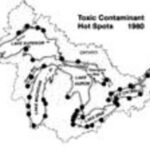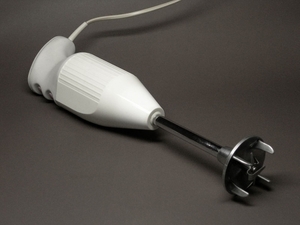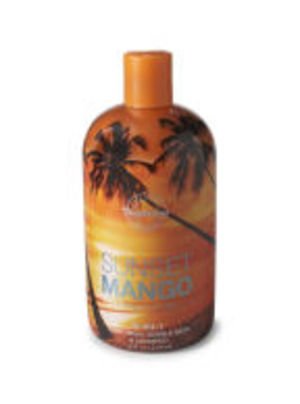Plastic containers are all around us; they are used to store food, hold water and other beverages, or even house our medications. With all of the different types of plastic being used, do you know which ones are really safe? Recently the discussion about plastic containers has focused mostly on the outrageous amount of landfill waste that is being created from plastic water bottles that are not being recycled. Even though this is a very good topic for discussion, we should really begin the plastic debate by addressing the various types of plastic being made and how harmful some of them may be.
For those that recycle, you may already be fully aware that there is normally a small recycling symbol on the bottom of most plastic containers. Inside the symbol is a number, which informs you of what nature of plastic the container is made, as well as if your recycling center will pick up and recycle the container. For the most part, a majority of recycling centers will always pick up #1 and #2 plastics, but some may even pick up #4 and #5.
So even though we know which number may be recycled and which may not, what does the number actually mean? The following is a breakdown of what the number means, where it is normally found, and if it has been seen as a good or bad plastic.
#1 is Polyethylene Terephthalate, also marked as PET or PETE. Companies normally use this plastic for various beverage containers such as water, soft drinks, and sport drinks. You can also find this plastic for ketchup, peanut butter, salad dressings, jellies, and various other condiments. This plastic is known as one of the “good” plastics since it is not known to leach, or gradually penetrate, chemicals into the products it houses.
#2 is known as High density polyethylene or HDPE. Companies will normally use this container for milk, various waters, juices, yogurt, margarine tubs, and trash bags. Some cereal box liners and grocery/retail bags may also be made of #2 plastics. This plastic is also known as a good plastic since it is not known to leach chemicals into the products.
#3 is known as Polyvinyl chloride or PVC. This plastic is normally used in cling-wraps and plastic baggies that delis or grocers use to wrap meats and cheeses, and IV bags. This plastic is sometimes seen as bad since it may leach traces of chemicals from the PVC into the foods it contains. The NIH has found that PVC may contain di-2-ethylhexyl phthalate (DEHP), which is suspected to be a human carcinogen.
#4 is known as Low density polyethylene or LDPE. This plastic is normally used for some bread companies, squeezable containers, or frozen food storage bags. This plastic is seen as neither good nor bad since it is not known to leach any chemicals into food, but it is not as widely recycled as #1 and #2.
#5 is known as Polypropylene or PP. This plastic may be found in some margarine tubs, ketchup bottles, or yogurt cups. This plastic is also seen as neither good nor bad since it is not known to leach chemicals into the products, but it is also not as widely recycled as #1 or #2.
#6 is known as Polystyrene or PS. This plastic is normally used for foam insulation, plastic or foam cups, food storage take-out containers, or even some plastic toys. This plastic is normally seen as a bad plastic. Besides not being recyclable, this plastic normally is made with Benzene, a human carcinogen as well as Butadiene and Styrene.
#7 is a various “other” plastic, normally labeled as Polycarbonate. This plastic may be found mostly in baby bottles, plastic eating utensils, microwaveable dinnerware, food storage take-out containers, and the plastic coating for metal paint cans. One of the most shocking places #7 can be found, besides baby bottles, is on “Stage 2” foods and “Graduate Sides” made by the Gerber baby food company. This plastic is normally seen as a bad plastic because it is made with Biphenyl-A, which is a synthetic estrogen. This can leach into food products as it ages as well as under heat. Biphenyl-A is thought to be a hormone disruptor than may simulate the action of estrogen when tested in human breast cancer studies.
Some companies, such as the ones that manufacture baby bottles, have taken this research into consideration when making their products. Currently some of them are now trying to switch to a more “kid friendly” and “earth friendly” plastic in order to ensure better health for our children and our planet. On a similar note, a recent study also showed the health factors in using PVC and other “plastic” garden hoses for drinking or even filling children’s pools. Even though most garden hoses have warnings on using the PVC style plastic hoses for water consumption, it was rather easy to overlook on the packaging. This is one reason why some manufacturers have begun making “safe” hoses that do not leach lead or other carcinogens from the product when used or even handled.
However, stop and think if you have ever seen a warning label on a package of baby bottles, baby food, or a take-out food container. Chances are you have not, nor will you see them in the future. Instead it is up to us as consumers to look out for ourselves, our families, and our planet. We need to begin to take notice of the numbering on plastic containers and begin to buy smarter. In the end, “big business” will normally not be the ones to shield us from the “bad” plastics they may or may not use; it will be our jobs to do so as well as to inform future generations of the down side of various plastics.





